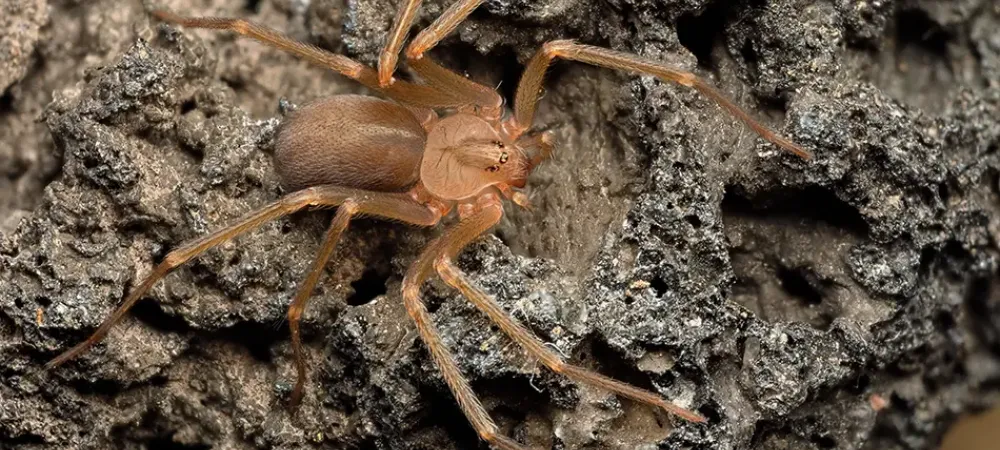Do Spiders in Texas Homes Mean a Bigger Infestation Nearby?

Spiders inside don’t always equal a major infestation, but they can be a sign of something bigger. A single spider in your Texas home usually means it wandered in by accident. But if you’re noticing spiders frequently, or in multiple rooms, it often points to another pest problem hiding nearby. Spiders go where the food is, so a consistent presence indoors usually means there are enough insects around to support them.
Does Seeing Spiders Always Mean an Infestation?
No, an occasional spider indoors is normal, but patterns and volume matter. Texas homes naturally get “one-off” spiders that wander in through gaps or open windows and doors. What points to something bigger is frequency, location, and what else you’re noticing.
Occasional intruders vs. signs of a larger problem:
- Occasional intruder: 1–2 spiders over a month, usually near doors/windows or in a garage. No web building up over time.
- Possible problem: Spiders popping up weekly or daily, especially in multiple rooms or far from entry points. Finding various spider webs around your home.
- Supporting evidence: You’re also noticing more flies, gnats, ants, moths, or roaches than usual, pests that spiders like to eat.
- Seasonal note: Short bursts during weather shifts (storms, fall cold snaps) can be normal. Persistent activity isn’t.
Why Spiders Inside Can Point to Other Pests
Spiders follow their food; more spiders usually means more insects inside your home. Spiders don’t invade to be social, they move in where they have a food source.
- Food trail: A rise in spiders often tracks with houseflies, fruit flies, ants, silverfish, or roaches inside.
- Hidden hotspots: Multiple spiders may suggest undetected insect activity in wall voids, attics, crawlspaces, or around leaky plumbing.
- Lighting and moisture: Bright exterior lights draw insects. Damp areas, such as bathrooms, are ideal for fungus gnats and other pests. Spiders then follow when those pests are present.
- Clutter & storage: Boxes, garages, and sheds harbor other bugs first, then spiders move in.
When Spider Activity Suggests a Bigger Issue
It’s a bigger concern when spiders show up often, in multiple places, or leave behind signs of breeding. One or two spiders isn’t unusual, but repeated sightings or physical evidence indoors suggest they’re finding enough food and shelter to stick around. Some of the signs that spider activity is a bigger issue include:
Frequent sightings across rooms
- Spiders appearing in different parts of the home, such as the kitchen, bathroom, or bedroom, instead of just near a door or window.
- Spotting spiders regularly, daily or weekly, rather than once in a while.
Webs, egg sacs, and clusters
- Webs that reappear even after cleaning, especially in corners, ceilings, or storage areas.
- Egg sacs (round, papery balls) indicate that spiders are nesting and reproducing inside.
- Groups of small spiders suggest a recent hatch.
Behavioral red flags
- Large wolf spiders roaming the floors at night could signal that there is plenty of prey.
- Activity near plumbing or damp areas where other insects thrive.
Which Texas Spiders Are Most Linked to Infestations
The spiders most likely to signal a larger pest problem in your home are common house spiders and wolf spiders. These species aren’t looking for trouble; they’re following their food. If you’re seeing multiple house spiders or wolf spiders indoors, it usually means there’s a hidden population of insects nearby that they rely on for food.
House spiders are small, build irregular webs in corners, garages, and storage spaces, and tend to stick around where insects are plentiful. Wolf spiders, on the other hand, don’t make webs but hunt along floors and baseboards. Seeing several wolf spiders indoors often points to ground-level prey like roaches, crickets, or other insects thriving unnoticed.
Venomous species such as brown recluses and black widows are less commonly linked to general infestations, but their presence should not be ignored. A brown recluse indoors often hides in undisturbed spaces like closets, boxes, or attics, while black widows prefer garages, sheds, or other sheltered areas. Seeing a single brown recluse doesn’t necessarily indicate a widespread problem, but spotting multiple brown recluses is more concerning. It usually means the home has conditions that allow them to establish and reproduce indoors. Even if they aren’t directly signaling a larger insect infestation, their presence shows that the environment is favorable for insects and for spiders that feed on them.
How to Tell if It’s Time to Call for Help
It’s time to call a professional when spider activity is frequent, widespread, or accompanied by other signs of pests. One or two spiders occasionally is normal, but if you’re seeing spiders regularly in multiple rooms, discovering webs or egg sacs, or spotting clusters of spiderlings, there’s likely more going on behind the scenes. Pay special attention if you encounter venomous species like brown recluses or black widows indoors, or if you’re noticing other insects such as roaches, ants, or flies at the same time. If you’re having trouble identifying the spider in your home, check out our guide on the most common spiders in Texas.
Even if you’ve tried basic prevention measures like sealing cracks, decluttering, and vacuuming webs, persistent spider sightings may indicate a deeper problem that’s hard to detect on your own. That’s when it makes sense to call in professionals. If you’re located in the Austin, TX area, Justice Pest Services can take care of your spider problem, helping restore peace of mind and keep your home safe. Contact us today!
